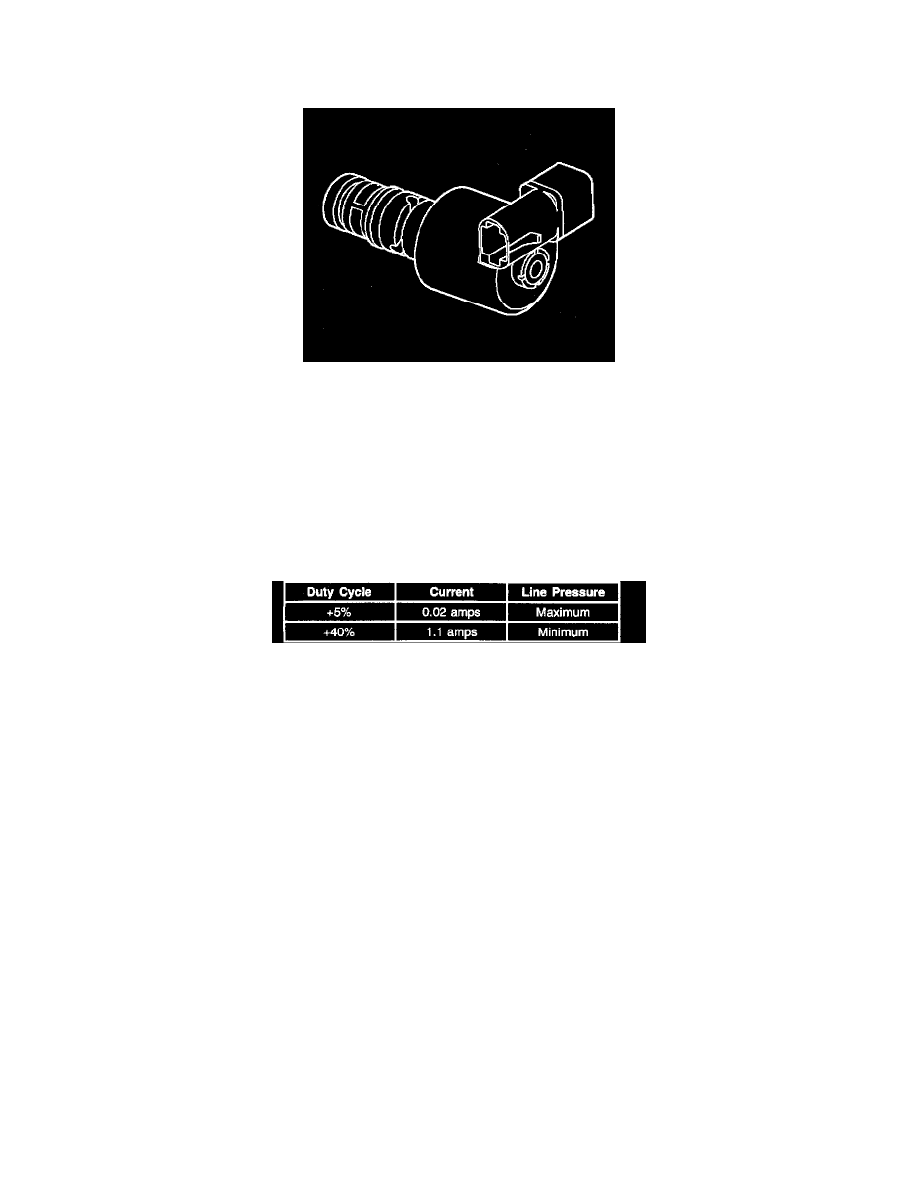Cutlass V6-191 3.1L VIN M SFI (1998)

Pressure Regulating Solenoid: Description and Operation
AUTOMATIC TRANSMISSION PRESSURE CONTROL SOLENOID VALVE
The Pressure Control Solenoid Valve (PC Solenoid Valve) is a precision electronic pressure regulator that controls the transmission line pressure.
This control is based on the flow of current through the valve's coil windings. As the flow of current is increased, the magnetic field which is produced
by the coil moves the solenoid's plunger further away from the exhaust port. Opening the exhaust port decreases the output fluid pressure regulated by
the PC Solenoid Valve, which ultimately decreases line pressure.
The Powertrain Control Module (PCM) controls the PC Solenoid Valve based on various inputs, including throttle position, fluid temperature, MAP
sensor, and gear state.
The PCM controls the PC Solenoid Valve on a positive duty cycle at a fixed frequency of 614 Hz. Duty cycle is defined as the percent of time current
is flowing through the solenoid coil during each cycle. A higher duty cycle provides a greater current flow through the solenoid. The high (positive)
side of the PC Solenoid Valve electrical circuit at the PCM controls the PC Solenoid Valve operation. The PCM provides a ground path for the
circuit, monitors average current and continuously varies the PC Solenoid Valve duty cycle to maintain the correct average current flowing through the
PC Solenoid Valve.
The resistance on the PC Solenoid Valve should measure between 3.5 - 4.6 ohms at 20°C (68°F).
